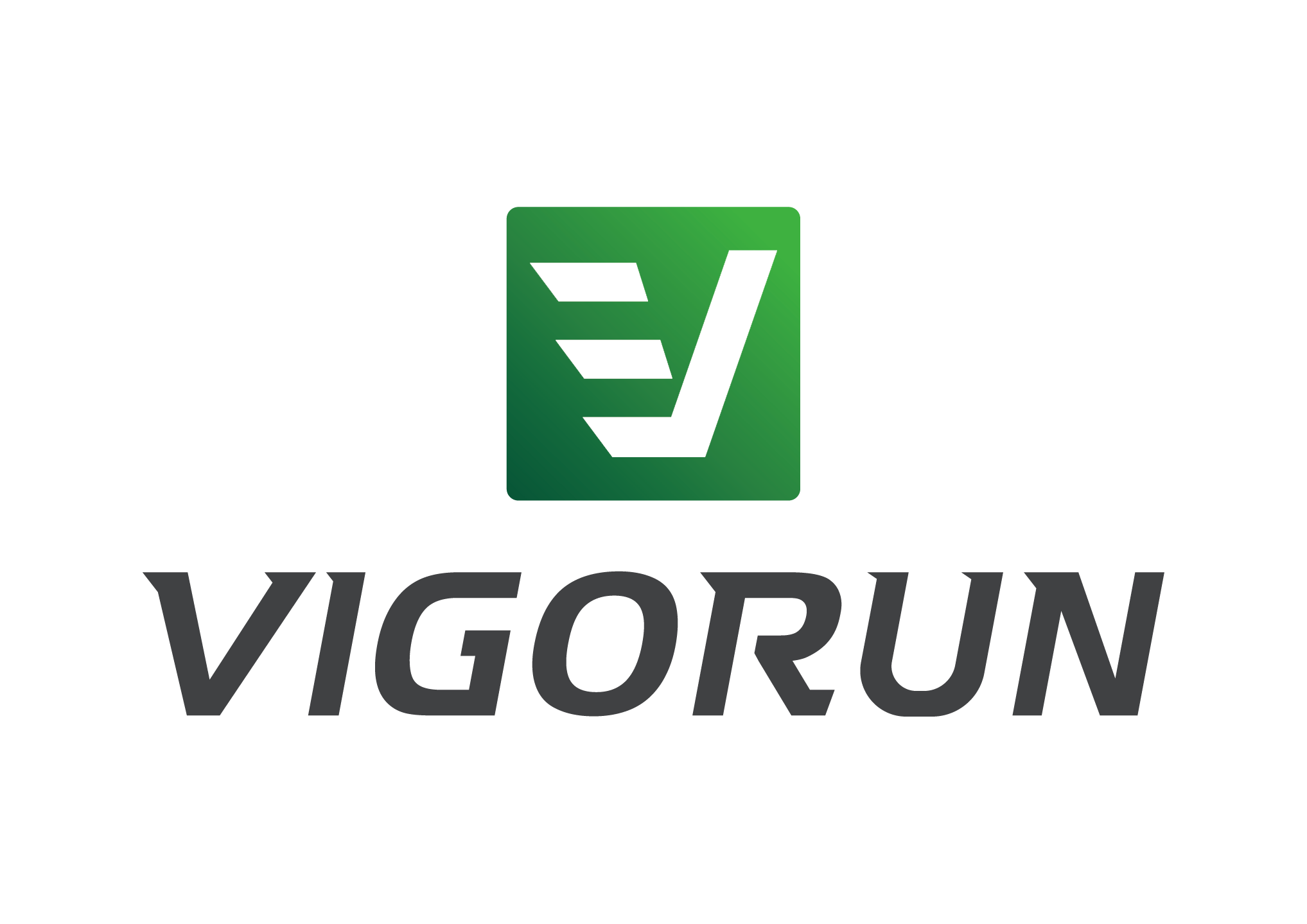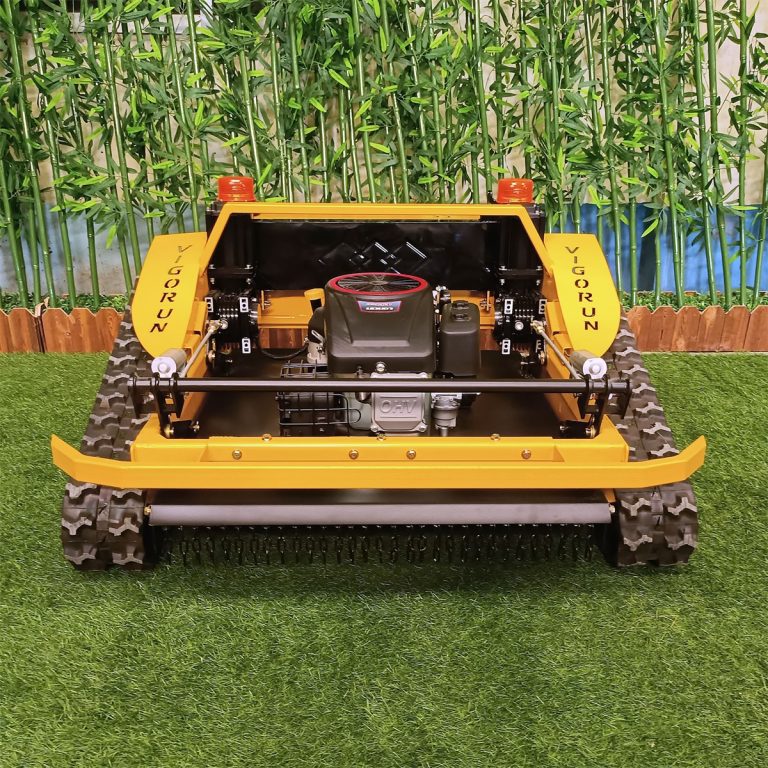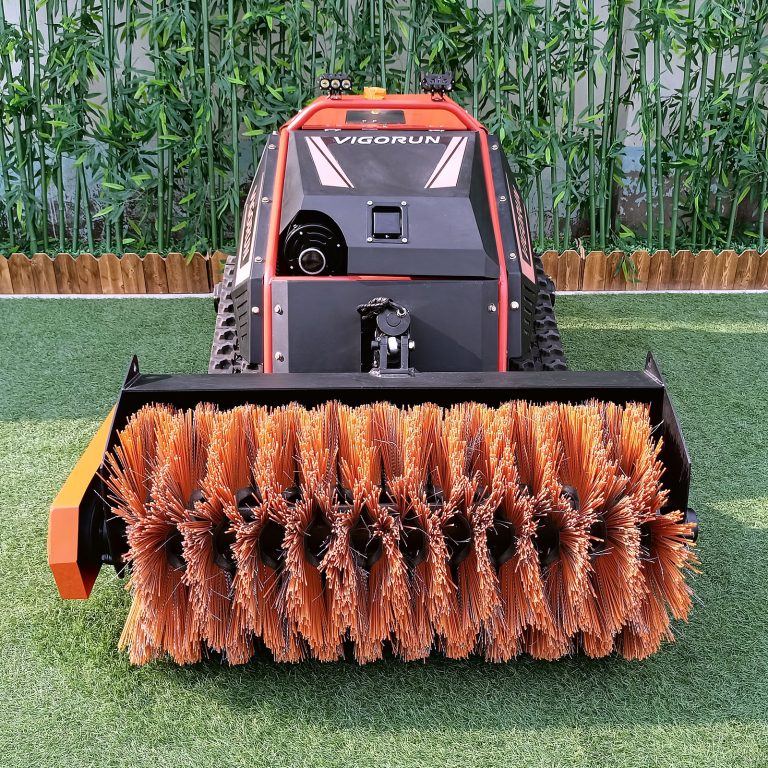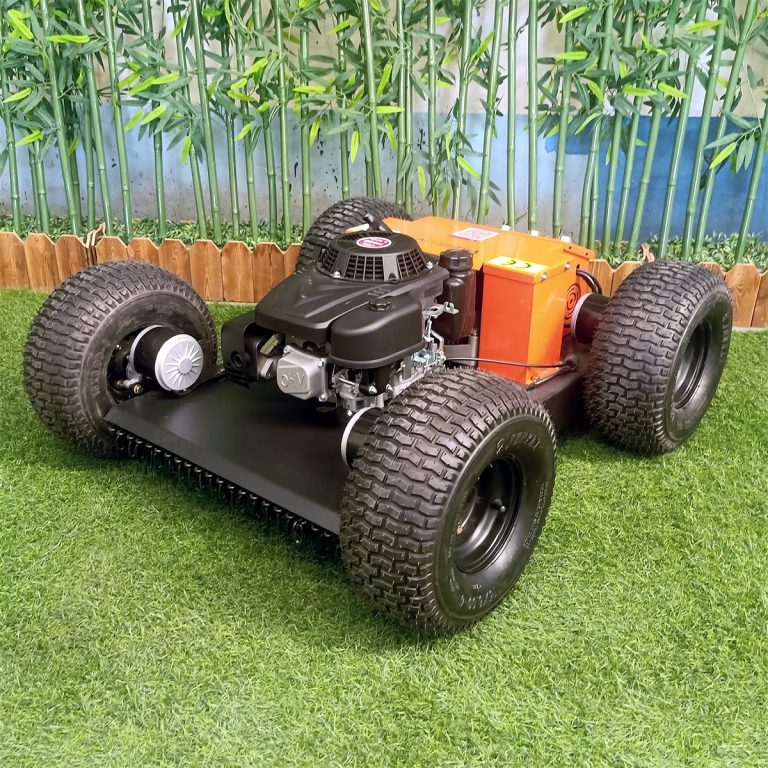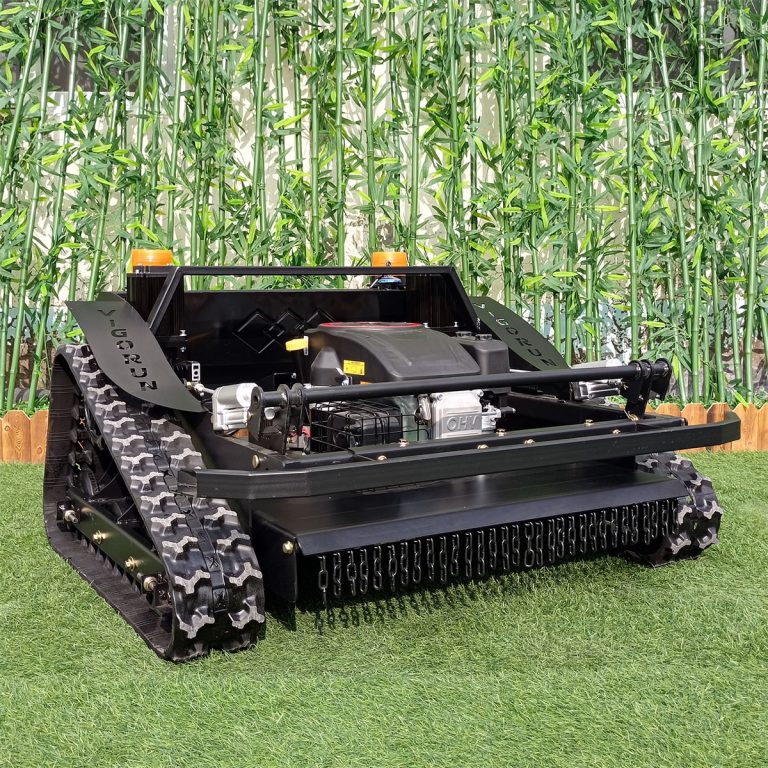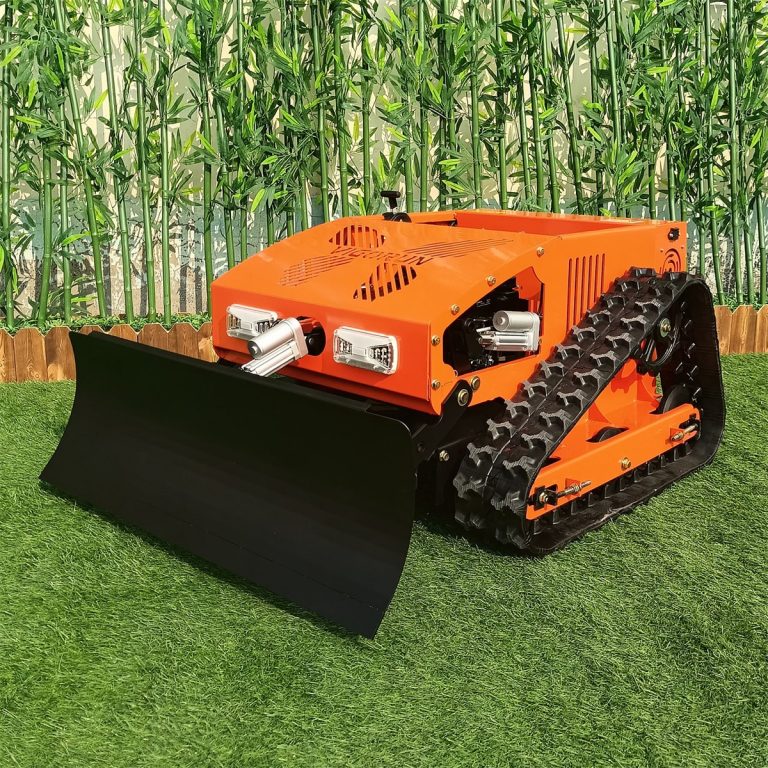Table of Contents
Advanced Engineering of the EPA Approved Gasoline Engine Low Energy Consumption Rubber Track Unmanned Brush Mulcher
The EPA approved gasoline engine low energy consumption rubber track unmanned brush mulcher represents a significant advancement in land management technology. Equipped with a powerful V-type twin-cylinder gasoline engine, specifically the Loncin brand, model LC2V80FD, this machine delivers an impressive rated power of 18 kW at 3600 rpm. With a robust 764cc engine capacity, it ensures strong performance and reliable operation in various environments.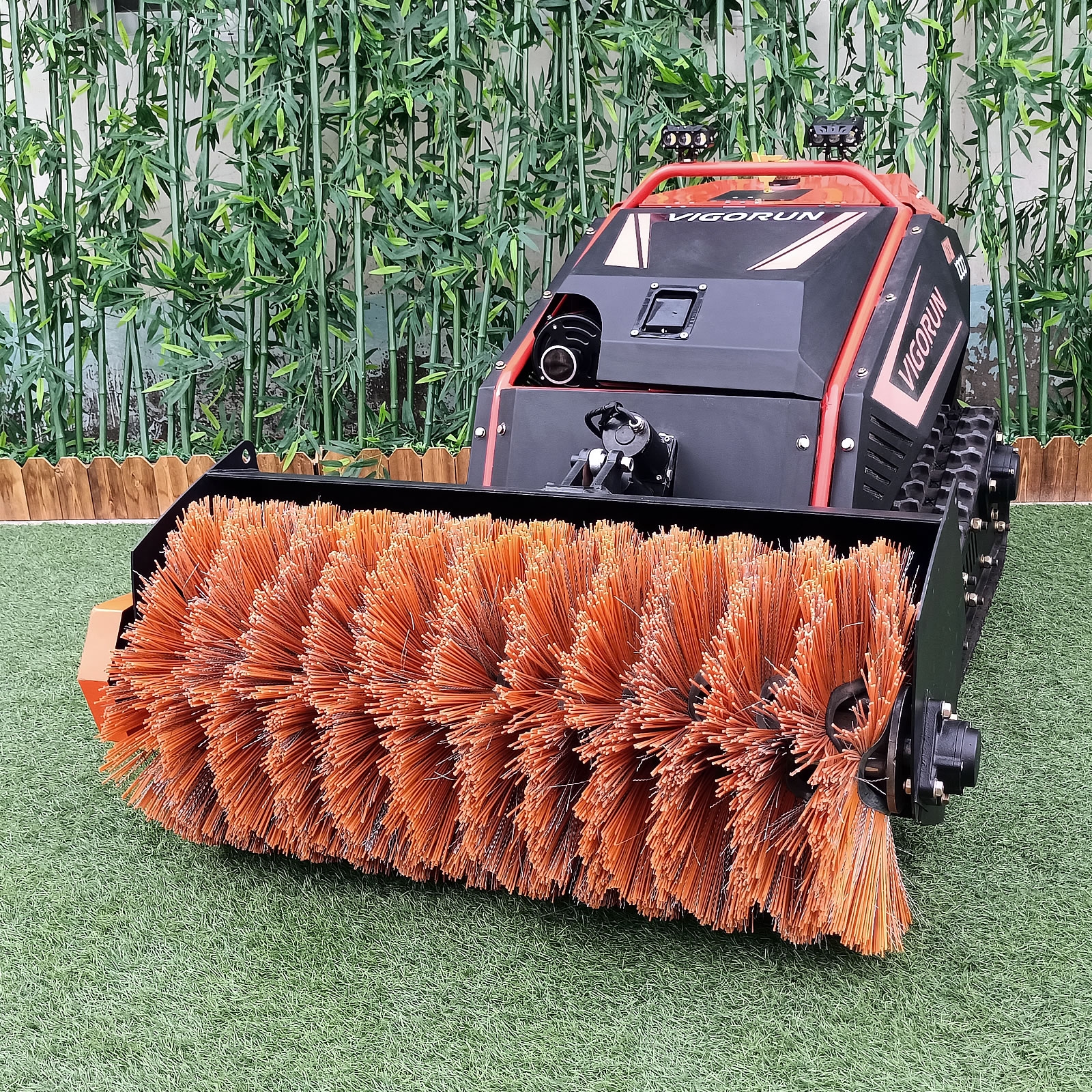 This innovative machinery features a clutch that engages only when the engine reaches a predetermined rotation speed, optimizing efficiency and reducing energy consumption. The high reduction ratio provided by the worm gear reducer multiplies the servo motor torque, which translates into immense output torque, especially vital for climbing resistant terrains. This design not only enhances the performance but also assures safety during operations on slopes.
This innovative machinery features a clutch that engages only when the engine reaches a predetermined rotation speed, optimizing efficiency and reducing energy consumption. The high reduction ratio provided by the worm gear reducer multiplies the servo motor torque, which translates into immense output torque, especially vital for climbing resistant terrains. This design not only enhances the performance but also assures safety during operations on slopes.
 Safety is further enhanced through the built-in self-locking function, which ensures that the machine remains stationary without throttle input. This feature effectively prevents unintended sliding, allowing operators to focus on their tasks with confidence. Additionally, the friction between the worm and gear provides mechanical self-locking, ensuring stability even in power-off situations.
Safety is further enhanced through the built-in self-locking function, which ensures that the machine remains stationary without throttle input. This feature effectively prevents unintended sliding, allowing operators to focus on their tasks with confidence. Additionally, the friction between the worm and gear provides mechanical self-locking, ensuring stability even in power-off situations.
Versatile Functionality and Intelligent Operation
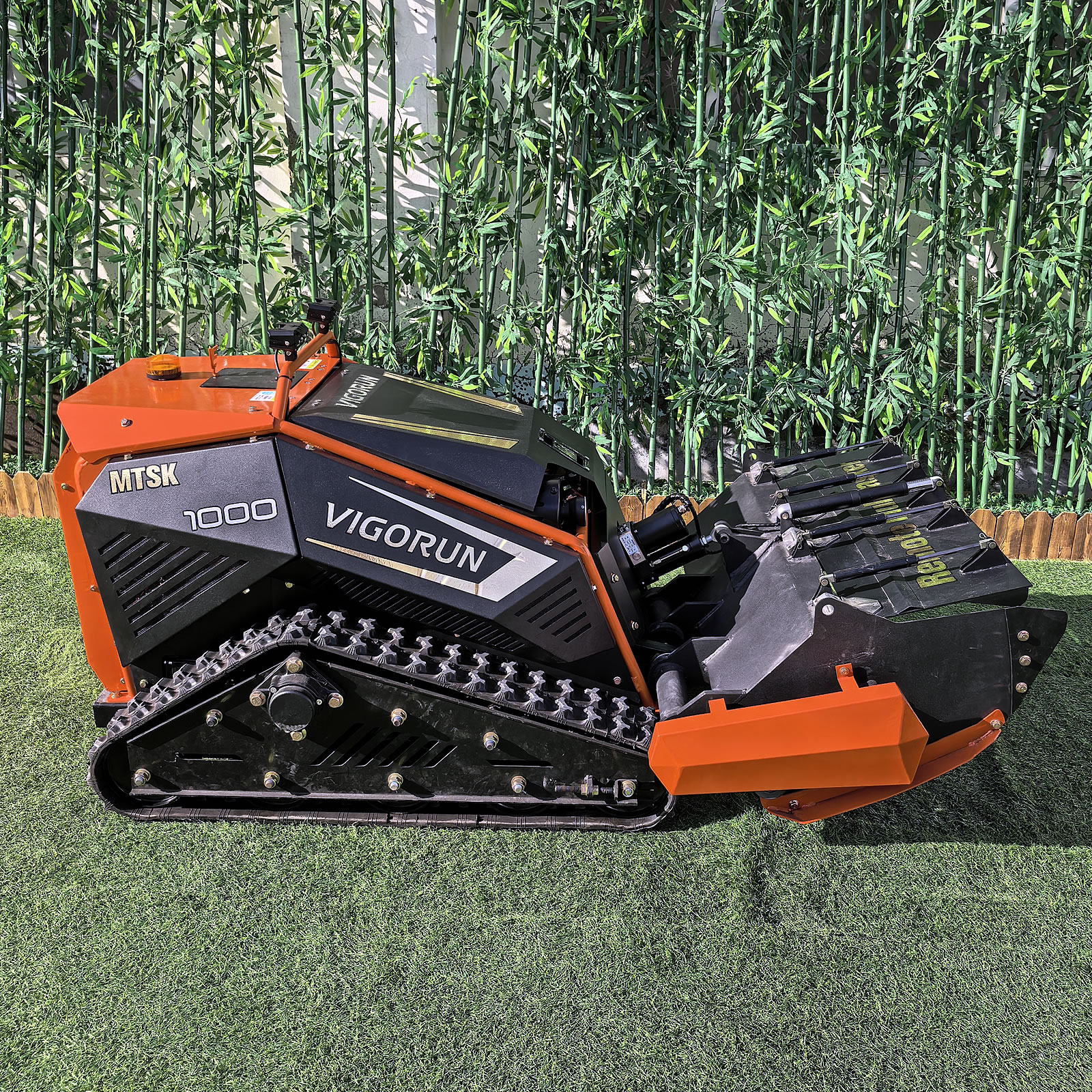
 The EPA approved gasoline engine low energy consumption rubber track unmanned brush mulcher is designed for versatility, equipped with electric hydraulic push rods that allow for remote height adjustment of attachments. This adaptability enables users to switch between various front attachments, including a 1000mm-wide flail mower, hammer flail, forest mulcher, angle snow plow, or snow brush. Such features make it ideal for diverse applications, from grass cutting and shrub clearing to snow removal.
The EPA approved gasoline engine low energy consumption rubber track unmanned brush mulcher is designed for versatility, equipped with electric hydraulic push rods that allow for remote height adjustment of attachments. This adaptability enables users to switch between various front attachments, including a 1000mm-wide flail mower, hammer flail, forest mulcher, angle snow plow, or snow brush. Such features make it ideal for diverse applications, from grass cutting and shrub clearing to snow removal.
 The intelligent servo controller that comes with this machine precisely regulates motor speed and synchronizes the left and right tracks. This advanced control system allows for straight-line travel without the need for constant remote adjustments. As a result, operators experience reduced workload, and the risks associated with over-correction on steep slopes are minimized.
The intelligent servo controller that comes with this machine precisely regulates motor speed and synchronizes the left and right tracks. This advanced control system allows for straight-line travel without the need for constant remote adjustments. As a result, operators experience reduced workload, and the risks associated with over-correction on steep slopes are minimized.
